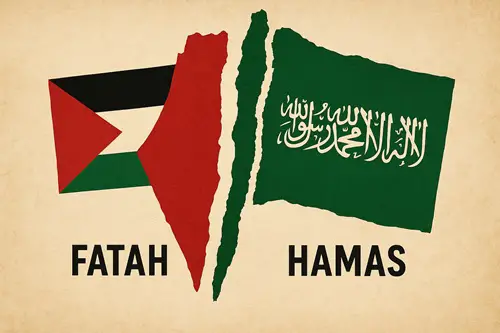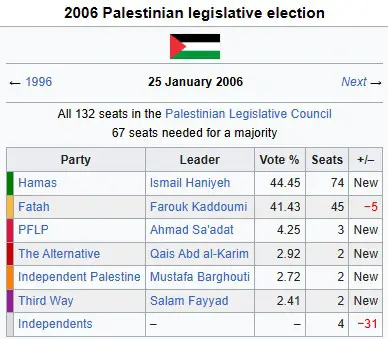|
TRANSLATE THIS ARTICLE
Integral World: Exploring Theories of Everything
An independent forum for a critical discussion of the integral philosophy of Ken Wilber
  Frank Visser, graduated as a psychologist of culture and religion, founded IntegralWorld in 1997. He worked as production manager for various publishing houses and as service manager for various internet companies and lives in Amsterdam. Books: Ken Wilber: Thought as Passion (SUNY, 2003), and The Corona Conspiracy: Combatting Disinformation about the Coronavirus (Kindle, 2020). Frank Visser, graduated as a psychologist of culture and religion, founded IntegralWorld in 1997. He worked as production manager for various publishing houses and as service manager for various internet companies and lives in Amsterdam. Books: Ken Wilber: Thought as Passion (SUNY, 2003), and The Corona Conspiracy: Combatting Disinformation about the Coronavirus (Kindle, 2020).
Check out my other conversations with ChatGPT
ISRAEL-PALESTINE 2025
Trump's New Israel-Hamas Peace Deal Why Don't the Palestinians Just Proclaim Their Own State? An Integral Approach to the Middle East Conflict Why Palestinians Are Their Own Greatest Enemy Israel and the Apartheid Accusation Israel and the Genocide Accusation Why Palestinians Are Their Own Greatest EnemyThe Fatah-Hamas Divide and the Crisis of Self-DestructionFrank Visser / ChatGPT
 The Palestinian national movement, born from a century of dispossession and resistance, faces two interlocking enemies. The first is external: the military and political dominance of Israel, sustained by Western support and regional instability. The second—and often overlooked—is internal: a deep, festering division within Palestinian ranks that has crippled national unity, paralyzed governance, and undermined any serious strategy toward independence. The enduring split between Fatah and Hamas, the two main Palestinian factions, has become a wound that bleeds the body politic from within. This essay examines how this division arose, how it hardened, and why it continues to be the most formidable obstacle to Palestinian self-determination. While Israel's occupation remains a structural reality, the Palestinians' inability to overcome factionalism has rendered them their own greatest enemy—politically, strategically, and even morally. 1. The Promise and Failure of OsloTo understand the roots of this self-destructive dynamic, one must revisit the 1990s, when the Oslo Accords appeared to herald a new dawn. The agreements, signed between the PLO (dominated by Fatah) and Israel, promised a gradual transfer of authority to a newly created Palestinian Authority (PA). In theory, this was to be the embryo of a sovereign Palestinian state in the West Bank and Gaza Strip, living side by side with Israel. But the promise of Oslo quickly unraveled. The PA became synonymous with corruption, bureaucracy, and nepotism. Arafat's leadership style—personalized and opaque—was more suited to guerrilla politics than state-building. The hoped-for economic improvements failed to materialize; Israeli settlements continued to expand; and disillusionment spread. Many Palestinians came to see the PA not as a step toward liberation but as a subcontractor managing Israel's occupation. In this climate of disillusionment, Hamas, founded in 1987 as an offshoot of the Muslim Brotherhood, gained ground. Presenting itself as pious, incorruptible, and steadfast in resistance, it appealed to a public weary of failed negotiations and moral decay. The seeds of intra-Palestinian conflict were thus sown: between a secular nationalist movement betting on diplomacy, and an Islamist resistance movement preaching armed struggle and divine victory. 2. The 2006 Elections and the Gaza CoupThe decisive rupture came in 2006, when the United States and the European Union, championing democratic reform, pressed for Palestinian parliamentary elections. To everyone's surprise—most of all Fatah's—Hamas won a clear victory.[1] The outcome reflected not an ideological conversion to Islamism but a protest vote against Fatah's corruption and the stagnation of the peace process. The result created a constitutional crisis. Fatah, entrenched in the presidency and bureaucracy, refused to share power. Hamas, flush with electoral legitimacy, refused to renounce violence or recognize Israel, as the West demanded. Sanctions followed, chaos deepened, and by mid-2007, the crisis erupted into armed conflict. After a week of street battles in Gaza, Hamas took power by force, expelling Fatah loyalists and executing some in public squares. The Palestinian Authority retreated to the West Bank, where it has governed ever since under Mahmoud Abbas. Gaza and the West Bank became politically and physically separate entities—two authorities, two security forces, two narratives of legitimacy. What began as a democratic experiment ended in a violent divorce. 3. Two Competing Visions for PalestineThis division is not merely about power but about incompatible worldviews. Fatah, shaped by the secular Arab nationalism of the mid-20th century, regards diplomacy, international recognition, and gradual institution-building as the path to statehood. It favors pragmatism, coordination with Israel where necessary, and engagement with Western donors. Hamas, in contrast, is rooted in a religious worldview that sees Palestine as sacred Islamic land, not to be compromised or partitioned. Its 1988 Charter rejected Israel's right to exist; though later softened, its rhetoric still frames the conflict as a cosmic struggle between Islam and Zionism. These divergent philosophies have produced divergent strategies. Fatah's leadership in Ramallah courts the United Nations, Europe, and the United States, seeking recognition and funds. Hamas, isolated and blockaded, seeks legitimacy through confrontation—with Israel, and occasionally with rival Arab regimes. Each claims to represent “the true Palestine,” yet each depends on foreign sponsors: Fatah on Western aid, Hamas on Iran and Qatar. This ideological polarization has fractured the national narrative. Palestinians no longer share a single vision of liberation, governance, or even morality. The struggle for independence has been replaced by a struggle for dominance. 4. Life Under Two GovernmentsThe everyday consequences of this political split are stark. In the West Bank, the PA maintains limited self-rule under Israeli oversight. Its security forces coordinate closely with Israel, preventing attacks and suppressing Hamas cells. Many Palestinians see this as collaboration, yet the PA defends it as a pragmatic necessity to preserve stability and Western funding. Corruption scandals abound, civil rights are curtailed, and elections have not been held since 2006. Mahmoud Abbas, now in his late eighties, governs by decree and has lost popular legitimacy. In Gaza, Hamas has built a parallel authoritarian system. It enforces conservative Islamic norms, cracks down on dissent, and taxes the impoverished population to finance its militant wing, the Qassam Brigades. While Hamas provides social services and commands a degree of grassroots loyalty, its rule has also brought isolation and repeated wars with Israel. Every confrontation—2008, 2014, 2021, and 2023—has devastated Gaza's infrastructure and deepened its humanitarian crisis. The two territories now function like separate states: with different laws, media, and educational narratives. Young Palestinians in Gaza and the West Bank grow up under entirely different realities—one under siege, the other under occupation. The dream of national unity has dissolved into mutual suspicion. 5. Division as a Strategic Gift to IsraelFrom Israel's perspective, the Fatah-Hamas split is a strategic blessing. As long as Palestinians are divided, there is no single entity with the authority—or the internal consensus—to negotiate peace or enforce agreements. Israel can claim there is “no partner for peace,” citing Hamas's refusal to recognize it and Fatah's inability to control Gaza. The division also relieves Israel of responsibility for Gaza, while keeping the West Bank fragmented under limited autonomy. Meanwhile, the international community focuses on humanitarian aid rather than political solutions. Even sympathetic nations find it difficult to support a Palestinian leadership that speaks with two voices and fights with itself. In effect, Palestinian disunity has become the silent guarantor of the status quo. It allows Israel to continue settlement expansion, maintain military control, and avoid difficult political compromises. 6. The Failure of ReconciliationOver the past 18 years, there have been at least a dozen attempts at reconciliation—brokered by Egypt, Qatar, Saudi Arabia, and others. Agreements in Cairo (2011), Doha (2012), and Cairo again (2017) all promised to form unity governments and hold elections. Yet every attempt has failed over the same issues: who controls security, how to share international aid, and who commands legitimacy in international forums. The two sides distrust each other profoundly. Fatah views Hamas as reckless extremists who have brought catastrophe upon Gaza. Hamas views Fatah as corrupt collaborators who have betrayed the resistance. Each fears that unity would mean its own political extinction. Moreover, both have vested interests in maintaining their enclaves. Fatah retains Western recognition and funding; Hamas retains absolute power in Gaza. Neither has incentives strong enough to risk real reconciliation. The result is a frozen conflict within the Palestinian polity itself—an impasse as paralyzing as the conflict with Israel. 7. The Human Cost of DisunityFor the Palestinian people, this division is not an abstract political failure but a daily catastrophe. Families divided between Gaza and the West Bank cannot easily visit one another. Different education systems teach different versions of history and identity. The sense of collective national purpose—so strong during the First Intifada—has withered. Civil society groups that attempt to bridge the divide face repression from both sides. Journalists, activists, and ordinary citizens who criticize their rulers risk imprisonment. Instead of building a democratic culture, both authorities have entrenched authoritarian habits, blaming Israel or foreign powers for their own failures. Economically, Gaza remains strangled by blockade and isolation, while the West Bank is dependent on international aid and Israeli-controlled trade. Poverty, unemployment, and hopelessness fuel emigration, especially among the young. In this environment, nationalism turns inward, corroding rather than inspiring. 8. The Moral Dimension: Self-BetrayalTo say that Palestinians are their own greatest enemy is not to absolve Israel of responsibility, nor to equate occupier and occupied. It is to recognize that political maturity requires self-criticism. A people cannot demand liberation from without if it remains enslaved by factionalism within. The tragedy is not simply that Fatah and Hamas disagree—it is that they have turned disagreement into identity. Each defines itself by the rejection of the other, rather than by service to their shared people. Both speak of resistance, but neither resists the temptation of power. Both speak of justice, yet both suppress dissent. This moral implosion is perhaps the deepest wound of all. Nations are built not only on borders and institutions but on the moral integrity of their leadership. When that integrity is lost, the dream of freedom becomes hollow rhetoric. 9. What Unity Would RequireReal unity cannot be decreed by foreign mediators; it must emerge from within Palestinian society itself. It would require:
These are not impossible goals, but they require courage—especially moral courage—to transcend the old narratives of victimhood and vengeance. 10. Conclusion: The Double OccupationPalestinians live under two occupations: one external, imposed by Israel, and one internal, imposed by their own divided and self-serving leadership. The first restricts their land; the second restricts their spirit. Until Palestinians confront this inner enemy—until they hold their leaders accountable and reclaim a unified vision—their cause will remain fragmented and impotent. Israel can be resisted, but self-sabotage cannot be conquered except by self-transformation. The tragedy of Palestine today is not only that it is oppressed, but that it has become incapable of freeing itself from the chains it forged in its own house. Only when Palestinians realize that the road to Jerusalem runs first through reconciliation in Ramallah and Gaza will the dream of independence cease to be an illusion—and become, at last, a possibility. NOTES[1] See: "2006 Palestinian legislative election", Wikipedia. A "clear victory" in seats, not in votes.
 Comment Form is loading comments...
|